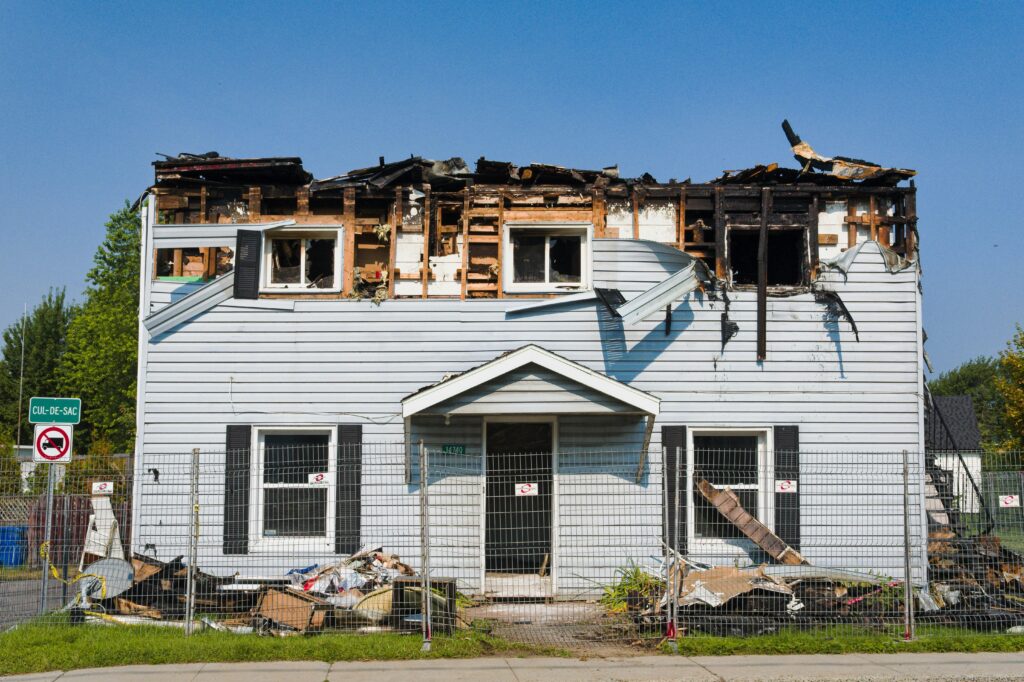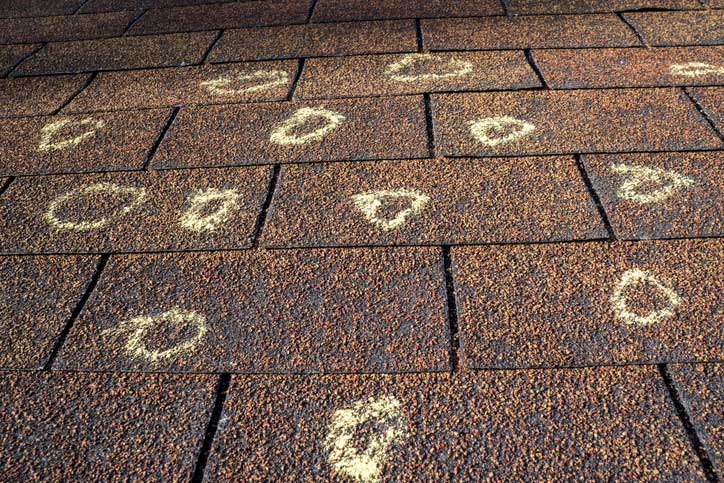Before filing a roof insurance claim, document all damage thoroughly with photos and videos from multiple angles. Review your policy to understand coverage limits and exclusions. Hire a licensed roofing contractor for professional inspection and get detailed estimates. Make temporary repairs to prevent further damage. Gather maintenance records and receipts to demonstrate proper upkeep. Create an inventory of all affected personal property. These essential steps can significantly improve your chances of claim approval.
Table of Contents
ToggleKey Takeaways
- Document roof damage thoroughly with clear photos and videos from multiple angles before filing your claim.
- Review your insurance policy to understand coverage limits, exclusions, and deductible amounts.
- Hire a licensed roofing contractor for professional inspection and detailed cost estimates.
- Implement temporary repairs to prevent secondary damage, keeping receipts for reimbursement.
- Compile maintenance records, repair history, and receipts to demonstrate responsible ownership.
Document All Roof Damage With Detailed Photos and Video
When storm damage strikes your roof, comprehensive documentation becomes your strongest asset for a successful insurance claim. Take clear, well-lit photos from multiple angles, capturing every damaged area including shingles, flashing, gutters, and vents. Don’t overlook seemingly minor issues as they might indicate more serious structural concerns.
Record video evidence that shows the full extent of the damage, narrating specific problems as you film. Implement a systematic photo organization system by creating folders for different roof sections and damage types. Insurance adjusters rely heavily on visual evidence during claim assessment.
For maximum impact, include close-ups of damaged materials alongside wider shots showing the damage context. Consider professional video analysis if extensive damage exists, as experts can identify subtle issues that untrained eyes might miss.
Review Your Insurance Policy Coverage and Exclusions
Before filing your roof insurance claim, thoroughly examine your policy’s fine print to understand exactly what’s covered and what isn’t. Look specifically for coverage limits, which determine the maximum amount your insurer will pay for repairs or replacement. Pay attention to exclusions that might void coverage, such as damage from neglected maintenance or certain weather events.
Note whether your policy offers actual cash value (depreciated) or replacement cost coverage. The difference can mean thousands of dollars in your pocket. Also check your deductible amount, as this represents your out-of-pocket expense before insurance kicks in.
If you’re uncertain about interpreting any terms, call your insurance agent for clarification. Understanding your insurance policy before filing saves time and prevents surprises during the claims process.
Hire a Professional Roofing Contractor for Inspection
You’ll need a licensed roofing contractor to identify hidden structural damage that insurance adjusters might miss during their initial assessment. Ask your contractor to provide detailed documentation with photographs, measurements, and cost estimates that specifically address your policy’s coverage terms. This independent professional assessment strengthens your claim by providing technical expertise that counters potential lowball estimates from your insurance company’s representatives.
Verify Hidden Damage First
Although visible damage might catch your immediate attention, hidden roof problems often cause the most significant long-term issues if left unaddressed. Your insurance claim’s success depends on documenting all damage, especially hidden leaks that compromise structural integrity. Before filing, guarantee your contractor thoroughly inspects beneath shingles and inside attic spaces.
| Hidden Damage Type | Signs to Look For |
|---|---|
| Water intrusion | Dark stains, musty odors |
| Deck deterioration | Sagging sections, soft spots |
| Insulation damage | Wet batting, compressed areas |
| Ventilation issues | Excess moisture, hot spots |
| Structural weakening | Cracked rafters, shifted supports |
Professional inspectors use moisture meters and thermal imaging to detect problems invisible to the naked eye. These detailed findings provide essential documentation that insurers can’t easily dismiss when evaluating your claim.
Get Detailed Documentation Ready
While submitting an insurance claim without proper documentation drastically reduces your chances of approval, comprehensive evidence strengthens your position significantly. Hire a certified roofing contractor who can provide a detailed inspection report specifying all damage, including affected roofing materials and necessary replacements.
Your documentation package should include:
- Date-stamped photographs of all visible damage
- The contractor’s written assessment with cost estimates
- Records of previous maintenance to show the damage wasn’t pre-existing
- Weather reports from the incident date
- Any evidence of interior damage caused by roof issues
This thorough approach streamlines the claim process and prevents insurance adjusters from undervaluing your claim. Remember to keep copies of everything you submit and maintain a log of all communications with your insurance company throughout the proceedings.
Independent Assessment Matters
Three critical reasons exist for securing an independent professional assessment before filing your roof insurance claim. Having a certified roofing contractor conduct an independent evaluation guarantees your claim reflects the true extent of damage, not just what’s visible to untrained eyes.
- Documentation credibility – Insurance adjusters respect professional assessments more than homeowner observations
- Claim accuracy – Experts identify hidden damage that might manifest as problems later
- Negotiation advantage – Detailed professional reports give you stronger standing when discussing settlements
- Counter-evidence protection – If your insurer’s adjuster misses damage, you’ll have documentation to dispute their findings
Don’t rely solely on the insurance company’s assessment. Their adjusters may overlook damages or undervalue repairs. Your independent evaluation provides essential protection throughout the claims process.
Secure Temporary Repairs to Prevent Further Damage
Making temporary repairs immediately after roof damage is essential to prevent secondary issues that could invalidate parts of your claim. Your insurance policy likely includes a “duty to mitigate” clause requiring you to take reasonable steps to minimize additional damage.
Consider these temporary repair options: use heavy-duty tarps secured with lumber to cover exposed areas, apply roofing cement to seal minor leaks, or install temporary shingles for immediate protection. Document all damage prevention strategies with photos before, during, and after these emergency fixes.
Keep all receipts for materials purchased, as these expenses are typically reimbursable under your policy. Don’t wait for an adjuster before implementing these measures—courts have consistently upheld insurers’ right to deny coverage for avoidable secondary damage resulting from delayed action.
Gather Previous Maintenance Records and Receipts
Your maintenance history serves as vital evidence when filing a roof insurance claim, so gather all receipts, invoices, and service records that demonstrate your consistent upkeep efforts. These documents will counter any potential allegations that damage resulted from neglect rather than the covered incident, especially since insurers often search for reasons to deny claims based on inadequate maintenance. Tracking and organizing all roof-related expenses over the years not only strengthens your current claim but also establishes a comprehensive financial record of your investment in protecting your property.
Documentation Proves Regular Care
Insurance adjusters scrutinize maintenance history when evaluating roof damage claims. Your ability to demonstrate consistent roof maintenance significantly strengthens your claim preparation. Documented care distinguishes legitimate weather damage from neglect-related deterioration.
Maintain comprehensive records that include:
- Annual inspection reports from certified roofing professionals
- Dated receipts for repairs, replacements, and maintenance services
- Before-and-after photographs documenting completed work
- Correspondence with contractors regarding recommendations and completed services
These records establish your property stewardship, countering potential claim denials based on neglect allegations. When submitting your claim, organize these documents chronologically in a dedicated folder. Digital backups provide additional security. Without this documentation, adjusters may conclude that damage resulted from poor maintenance rather than covered perils, substantially reducing your settlement or resulting in outright claim rejection.

Repair History Strengthens Claims
While comprehensive documentation demonstrates regular care, a detailed repair history provides concrete evidence that significantly amplifies your insurance claim’s credibility.
Compile all receipts, contractor invoices, and work orders from previous roof maintenance and repairs. These records establish a timeline showing your commitment to addressing issues promptly. During claim negotiation, these documents can counter potential denials based on neglect allegations.
Create a spreadsheet organizing repairs chronologically, noting problems addressed, solutions implemented, and costs incurred. This systematic approach assists with policy interpretation when determining covered damages versus wear and tear exclusions.
Include photographs of completed repairs whenever possible, particularly those addressing storm-related damage or preventative maintenance. This visual evidence further demonstrates your proactive approach and provides valuable comparison points for adjusters evaluating your current claim.
Expense Tracking Matters
Keeping track of every dollar spent on your roof pays off tremendously during the claims process. Insurance adjusters value detailed expense records as evidence of your diligent maintenance and the actual value of your roof investment. Implementing effective expense tracking techniques now will strengthen your future claims.
- Create a dedicated digital folder for all roof-related receipts, invoices, and payment confirmations
- Maintain a spreadsheet documenting dates, services performed, costs, and contractor information
- Take photos of completed work alongside corresponding receipts for visual validation
- Set up calendar reminders for budgeting for repairs and routine maintenance intervals
This organized approach demonstrates your responsible ownership and provides concrete evidence of your financial investment, making it significantly harder for insurers to deny legitimate claims based on maintenance negligence.
Create a Comprehensive Inventory of Affected Personal Property
Documenting every item damaged by your roof leak or collapse is a critical step that many homeowners overlook during the insurance claim process. Create a detailed inventory checklist of all personal property affected, noting each item’s condition, approximate age, and estimated value.
| Item Category | Documentation Needed | Value Determination | Action Required |
|---|---|---|---|
| Electronics | Serial numbers, model | Original receipts | Photos before disposal |
| Furniture | Dimensions, materials | Replacement quotes | Document water damage |
| Clothing | Quantity, brands | Purchase estimates | Sort salvageable items |
| Decor/Art | Artist, acquisition date | Appraisals | Professional restoration assessment |
Don’t rely on memory—inspect every corner of affected rooms. Your comprehensive inventory will significantly strengthen your claim and help guarantee you’re fully compensated for all damaged personal property, not just the obvious items.
Frequently Asked Questions
How Long Do I Have to File a Roof Insurance Claim?
When Hurricane Ian devastated Florida homes in 2022, many homeowners lost their opportunity for coverage by missing claim deadlines. You typically have 1-3 years to file a roof insurance claim, but this varies by state and policy. Some insurers require notification within just 30-60 days of damage. Check your policy immediately for specific timeframes. Don’t delay the claim process—insurance companies often view late claims suspiciously and may investigate more thoroughly or deny coverage altogether.
Will Filing a Claim Increase My Insurance Premiums?
Filing a claim may increase your insurance premiums, but it’s not guaranteed. Your claim frequency plays a significant role—multiple claims within a short period typically have a greater impact on premium rates than a single claim. Insurance companies evaluate risk differently, so some may raise your rates while others might not, especially for weather-related damage that wasn’t preventable. Review your policy details and consider consulting your agent before filing to understand potential financial implications.
Can I Choose My Own Contractor After Claim Approval?
While insurance companies might suggest their preferred vendors, you absolutely can choose your own contractor after claim approval. It’s your property and your right. During the claim process, clearly communicate your contractor selection preference to your adjuster. You’ll need to make certain your chosen professional meets the insurer’s licensing and insurance requirements. Compare multiple quotes to demonstrate you’re selecting a fair and reasonable bid for the approved scope of work.
What if My Claim Is Denied?
If your claim is denied, you should immediately request the denial reasons in writing from your insurer. You’re entitled to this information. Once you understand why, you can file a claim appeal with additional documentation supporting your case. Consider hiring a public adjuster or attorney who specializes in insurance claims. They’ll help strengthen your position and navigate the appeals process. Don’t wait too long—most policies have strict deadlines for filing appeals after denial.
Is Roof Age a Factor in Claim Settlements?
Roof age is absolutely a factor in claim settlements. Your roof’s lifespan significantly impacts insurance coverage decisions. Most insurers use depreciation schedules based on your roof’s age and expected longevity. Older roofs (15+ years) often receive actual cash value coverage rather than full replacement cost. Some policies even include specific age exclusions or higher deductibles for aging roofs. Always check your policy’s age-related stipulations before filing a claim for precise coverage understanding.



One Response